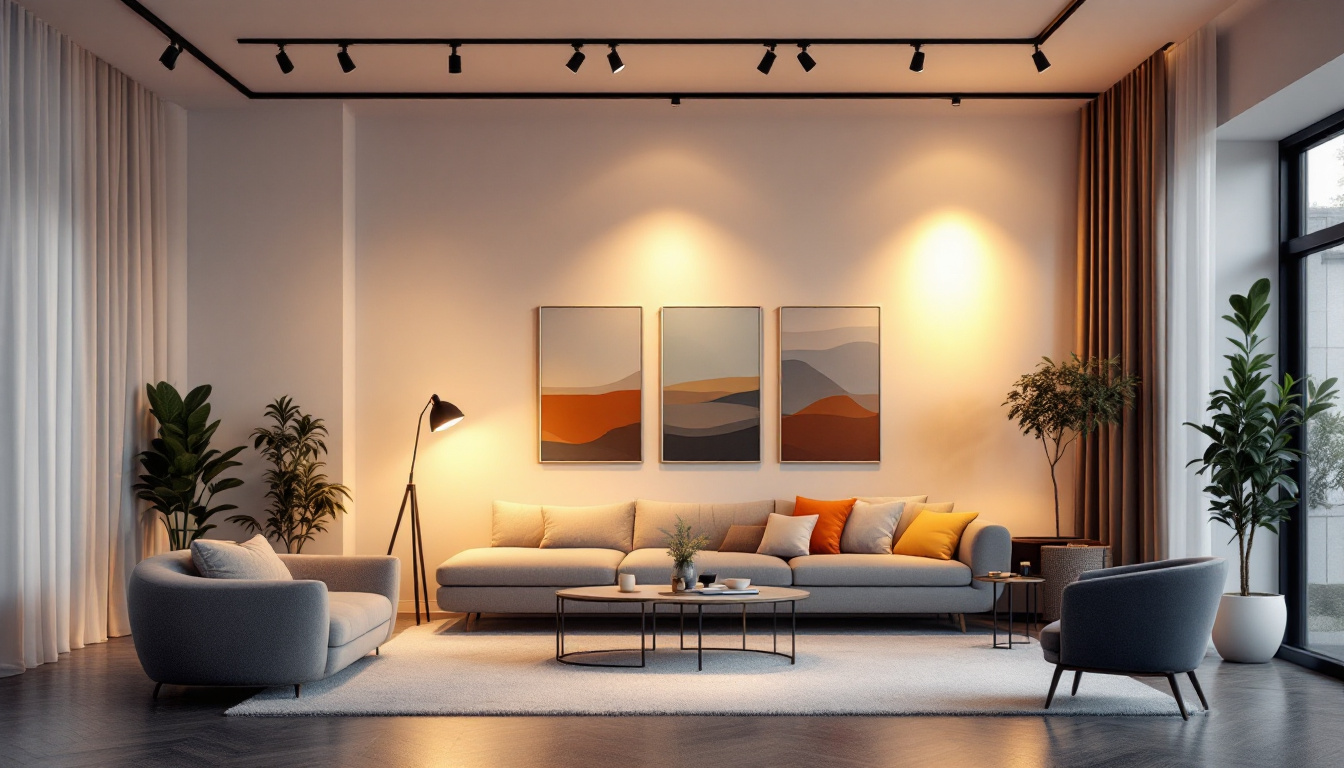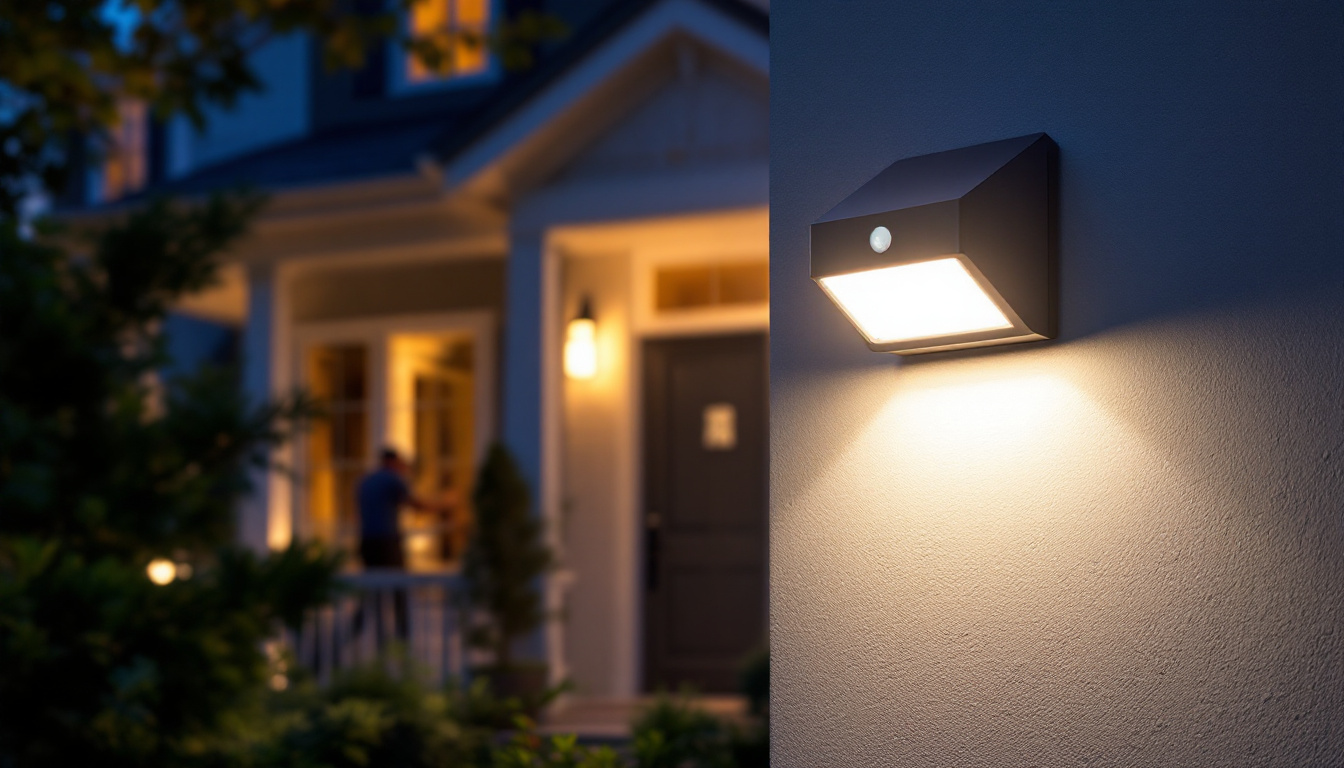
Track lighting has become a popular choice for both residential and commercial spaces, offering versatility and aesthetic appeal. This article delves into the insights shared by expert lighting contractors, exploring the benefits, installation tips, and design considerations of track lighting systems. Whether you are a seasoned contractor or new to the field, understanding the nuances of track lighting can enhance your projects and satisfy your clients.
Track lighting consists of a series of light fixtures mounted on a track, allowing for adjustable positioning and direction. This flexibility makes it ideal for various applications, from highlighting artwork to providing general illumination in a room. The system can accommodate different types of bulbs, including LED, incandescent, and halogen, each offering unique benefits. The ability to direct light precisely where it is needed not only enhances the aesthetic appeal of a space but also improves functionality, making it a popular choice for both residential and commercial environments.
One of the primary advantages of track lighting is its adaptability. Contractors can easily modify the layout to suit the needs of the space, making it an excellent choice for areas that require frequent changes in lighting design. Additionally, track lighting can be installed on ceilings or walls, providing further versatility in design. This adaptability is particularly beneficial in dynamic environments such as galleries, retail stores, and homes where the decor may change seasonally or with trends. The ability to reposition fixtures allows for continual innovation in lighting design, ensuring that spaces remain fresh and inviting.
Another significant benefit is the energy efficiency of modern track lighting systems. With the rise of LED technology, contractors can offer clients solutions that not only reduce energy consumption but also lower utility bills. This eco-friendly aspect appeals to many homeowners and businesses looking to enhance sustainability. Furthermore, LED bulbs have a longer lifespan compared to traditional incandescent bulbs, which means less frequent replacements and reduced waste. This longevity, combined with lower heat output, makes LED track lighting an ideal choice for energy-conscious consumers aiming to minimize their environmental footprint while enjoying stylish and effective lighting solutions.
There are several types of track lighting systems available, each with distinct features. The most common types include:
Understanding the differences between these types allows contractors to recommend the most suitable option based on the client’s needs and the intended application. Additionally, many track lighting systems come with a variety of accessories, such as connectors and end caps, which can further enhance their functionality and aesthetic appeal. For instance, curved tracks can create unique lighting effects in a space, while adjustable heads can be angled to create dramatic shadows or highlight specific areas. The choice of finish—ranging from sleek metallics to matte colors—also plays a crucial role in how well the track lighting integrates with the overall interior design theme.
Proper installation is crucial for the performance and longevity of track lighting systems. Here are some expert tips to ensure a successful installation:
Before installation, it is essential to plan the layout carefully. Consider the purpose of the track lighting and the areas that require illumination. Using a laser level can help ensure the track is straight and properly aligned. Additionally, taking into account the height of the ceiling and the placement of furniture can prevent shadows and ensure optimal lighting.
Contractors should also consider the spacing between fixtures. A general rule of thumb is to space fixtures 4 to 6 feet apart, but this can vary based on the desired effect and the type of bulbs used. Proper spacing will help achieve even lighting and avoid overly bright or dark areas. Furthermore, assessing the color temperature of the bulbs can significantly impact the ambiance of the space. Warmer tones can create a cozy atmosphere, while cooler tones are ideal for task-oriented areas like kitchens or workspaces.
Electrical safety is paramount when installing track lighting. Ensure that the circuit can handle the load of the new fixtures, and consider using a dedicated circuit for larger installations. It is also crucial to follow local building codes and regulations, as these can vary significantly.
For contractors unfamiliar with electrical work, consulting with a licensed electrician can prevent costly mistakes and ensure the installation meets safety standards. Using track lighting systems with built-in transformers can simplify installation and reduce the risk of electrical issues. Additionally, incorporating dimmer switches can provide further versatility, allowing clients to adjust the brightness according to their needs and preferences. This feature is particularly beneficial in multipurpose rooms where lighting requirements may change throughout the day.
After installation, testing the track lighting system is essential. Check each fixture to ensure it is functioning correctly and adjust the direction of the lights as needed. This step allows contractors to make any necessary changes before completing the project, ensuring client satisfaction.
Encouraging clients to experiment with different angles and positions can also enhance the overall effect of the lighting. Track lighting’s flexibility allows for easy adjustments, making it a dynamic option for any space. Moreover, consider the use of accessories such as lenses or filters that can further modify the light output, creating effects like softening harsh light or adding color to the illumination. These small details can elevate the overall design and functionality of the lighting scheme, making it not just practical but also a key element of the room’s aesthetic appeal.
When it comes to design, track lighting offers a myriad of possibilities. Contractors should consider both aesthetics and functionality to create a cohesive look that meets the client’s vision.
The choice of fixtures can significantly impact the overall design of the track lighting system. From sleek and modern designs to more traditional styles, the options are vast. Contractors should guide clients in selecting fixtures that complement the existing decor and enhance the intended ambiance of the space.
Additionally, the color temperature of the bulbs plays a crucial role in the overall feel of the room. Warmer tones create a cozy atmosphere, while cooler tones can make a space feel more open and airy. Understanding the client’s preferences and the function of the space will help in making the right choices.
Track lighting can be used to create layers of light, combining ambient, task, and accent lighting to achieve a well-rounded effect. Ambient lighting provides overall illumination, while task lighting focuses on specific areas, such as a kitchen counter or reading nook. Accent lighting highlights artwork or architectural features, adding depth and interest to the space.
Contractors should encourage clients to think about how they use each area of their home or business. By layering different types of lighting, they can enhance functionality while also creating a visually appealing environment.
As technology continues to advance, integrating smart lighting solutions into track lighting systems has become increasingly popular. Smart track lighting allows users to control brightness, color, and even scheduling through a smartphone app or voice commands.
Contractors should stay informed about the latest smart lighting technologies and be prepared to offer clients options that enhance convenience and energy efficiency. This trend not only appeals to tech-savvy clients but also adds value to the overall project.
While track lighting offers many benefits, there are also challenges that contractors may encounter during installation and design. Understanding these challenges and having solutions at hand can streamline the process and ensure client satisfaction.
Low ceilings can pose a challenge for track lighting installations, as traditional fixtures may not provide adequate clearance. In such cases, using flush-mounted or low-profile track lighting can be an effective solution. These designs maintain the functionality of track lighting while accommodating lower ceiling heights.
Additionally, contractors should consider the use of pendant lights or adjustable fixtures that can be positioned to maximize light output without compromising headroom.
Uneven light distribution can be a common issue with track lighting. To address this, contractors should carefully plan the placement of fixtures and consider using adjustable heads that can be directed to fill dark spots. Additionally, using a combination of different bulb types can help achieve a more balanced light output.
Consulting with clients during the planning phase can also help identify specific areas that may require additional attention, ensuring the final result meets their expectations.
Budget limitations can impact the choice of fixtures and the overall design of the track lighting system. Contractors should work closely with clients to establish a realistic budget and explore options that meet their needs without compromising quality.
Offering a range of fixtures at different price points can help clients make informed decisions. Additionally, discussing energy-efficient options, such as LED bulbs, can provide long-term savings that may justify a higher initial investment.
Track lighting is a versatile and stylish solution for illuminating any space. By understanding the benefits, installation tips, and design considerations, lighting contractors can enhance their expertise and provide clients with exceptional service. The insights shared by industry experts highlight the importance of careful planning, attention to detail, and staying informed about the latest trends and technologies.
As the demand for innovative lighting solutions continues to grow, contractors who embrace track lighting will be well-equipped to meet the evolving needs of their clients. By combining functionality with aesthetic appeal, track lighting can transform spaces and create lasting impressions.
Ready to elevate your lighting game? LumenWholesale is here to support your track lighting endeavors with superior, spec-grade lighting products at unmatched wholesale prices. Say goodbye to local distributor markups and hello to our extensive selection that meets rigorous industry standards. With free shipping on bulk orders, you can trust that you’re getting premium lighting at the best value — without any hidden fees. Make your next project shine with the quality, affordability, and convenience of Wholesale Lighting at the Best Value. Join the LumenWholesale family and transform your lighting solutions today.

Discover how motion sensor porch lights are revolutionizing the lighting industry, offering new opportunities and efficiencies for contractors.

Discover the top mistakes lighting contractors make with LED sensors and learn how to avoid them.

Discover essential tips for selecting and installing wall outlets to enhance your lighting projects.

Discover expert strategies and innovative techniques for lighting contractors to effectively install and utilize wall sconce lights.